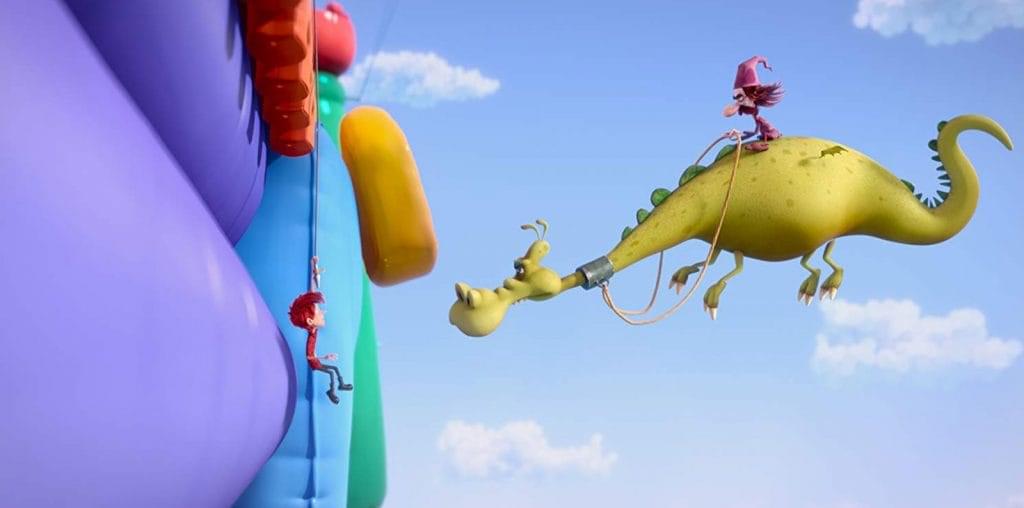
In the realm of screen comedy, Harry Langdon (1884-1944) has created one of the widest levels of debate among film scholars. Unlike his contemporaries Charlie Chaplin, Buster Keaton and Harold Lloyd, Langdon’s period of stardom was relatively brief, and his reputation has been tarnished by accusations that he was barely responsible for his own success.
After a successful career in vaudeville, Langdon entered films in 1923 in two-reel comedies under the aegis of Mack Sennett. Langdon quickly graduated to feature films that centered on his unique persona of a man-child at odds with a strange and hostile world. His initial feature film efforts – “Tramp, Tramp, Tramp” (1926), “The Strong Man” (1926) and “Long Pants” (1927), with the latter two directed by Frank Capra – were box office hits.
However, Langdon and Capra had a falling out, and the star took over the direction of his next three feature films – “Three’s a Crowd” (1927), “The Chaser” (1928) and “Heart Trouble” (1928) – but they were commercial failures that sent his career into a tailspin. By the time sound came to films, many Hollywood insiders considered Langdon a has-been.
Langdon’s work was mostly forgotten until 1949, when James Agee’s groundbreaking Life Magazine essay on silent comedy rescued Langdon’s reputation and put him on an equal level with Chaplin, Keaton and Lloyd. But some film scholars questioned Agee’s advocacy of Langdon’s genius. Further confusing matters was Capra, who tarnished Langdon’s reputation by claiming Langdon was unintelligent and not responsible for his screen success. Instead, Capra took credit for creating Langdon’s screen persona and dubbed the actor the “big star who never understood what made him funny.”
Film historian James L. Neibaur revisits Langdon’s silent film output in the new book “The Silent Films of Harry Langdon (1923-1928),” published by Scarecrow Press. For his part, Neibaur argues that Langdon’s work was far ahead of its time, and he challenges the negative reputation that stains the comic’s self-directed films. Film Threat discussed the Langdon experience with Neibaur.
What is it about Harry Langdon that places him among the giants of silent film comedy?
There were many, many funny people during the 1920s. The ones who stand out had a particular style and vision that extended beyond merely the talent for executing funny gags.
Langdon’s perspective was quirkier and tended toward surreal gags and edgier material. The fact that his character was so childlike made the edgier material as unsettling as it was amusing. Langdon is one of the most original and fascinating comedians in American cinema’s rich history.
Langdon came to Hollywood prominence through his work with Mack Sennett in two-reel comedies. Were the Langdon shorts typical of the slapstick knockabout that characterized much of the Sennett output?
At first there was an attempt to place him in typical slapstick vehicles, and Langdon did his best to work within these parameters. But he had developed a significant comic character over years on stage, and Sennett’s attempts to cast him as more aggressive did not seem to mesh well with Langdon’s approach. Eventually, director Harry Edwards began helming the Langdon two-reelers and gave the comedian more room to draw from his own experience. The films became more individualized and interesting.
There has been a great deal of conflicting information regarding Frank Capra’s role in Langdon’s rise and fall. How much credit did Capra deserve in elevating Langdon’s star?
Langdon had developed his character on stage, did his best to exhibit some of these traits in his earlier Sennett films, and showed even more growth when working with Harry Edwards. Capra is not credited with working on a Harry Langdon film until the comedian had already made several two-reelers and his character has been established. Capra’s claim that he was instrumental in creating Langdon’s character and that Harry was so dense he did not even know the plots of the pictures he was doing is simply not true.
Langdon’s final silent film, the 1928 feature “Heart Trouble,” is considered lost. If the film is rediscovered, do you believe that it could vindicate Langdon’s reputation as a director?
Langdon’s other directorial efforts, “Three’s a Crowd” and “The Chaser,” still exist, but they were unavailable for years. Seeing them now, one realizes Langdon’s approach to direction was much more relaxed – but this method is quite effective. The pauses in “Three’s a Crowd,” for instance, showing Harry pondering the situation, are highly effective in context. Every blink of his eye means something.
I believe these films alone should vindicate Langdon’s rep as a director. The quirkiness of the films did not resonate with 1920s audiences. Then talkies hit. Perhaps if Langdon had time to direct more silents, he could have established a style and found a mainstream audience.
For those who are unfamiliar with Langdon’s work, which films would you recommend as an introduction?
For short films, I would include “All Night Long,” “Feet of Mud,” “Boobs in the Woods” and “Saturday Afternoon.” For features I would recommend “Tramp, Tramp, Tramp” and “The Strong Man.” Once one is acclimated with Langdon’s particular style, they can venture to the quirkier “Long Pants,” “Three’s a Crowd” and “The Chaser.”
